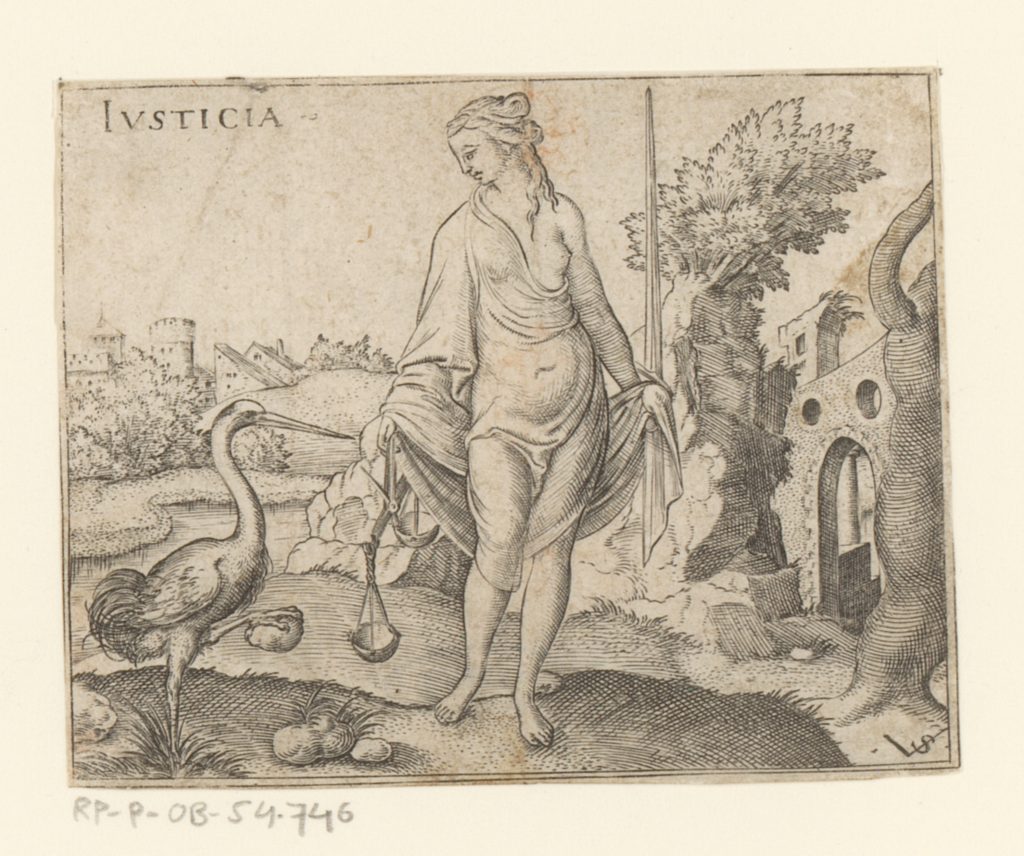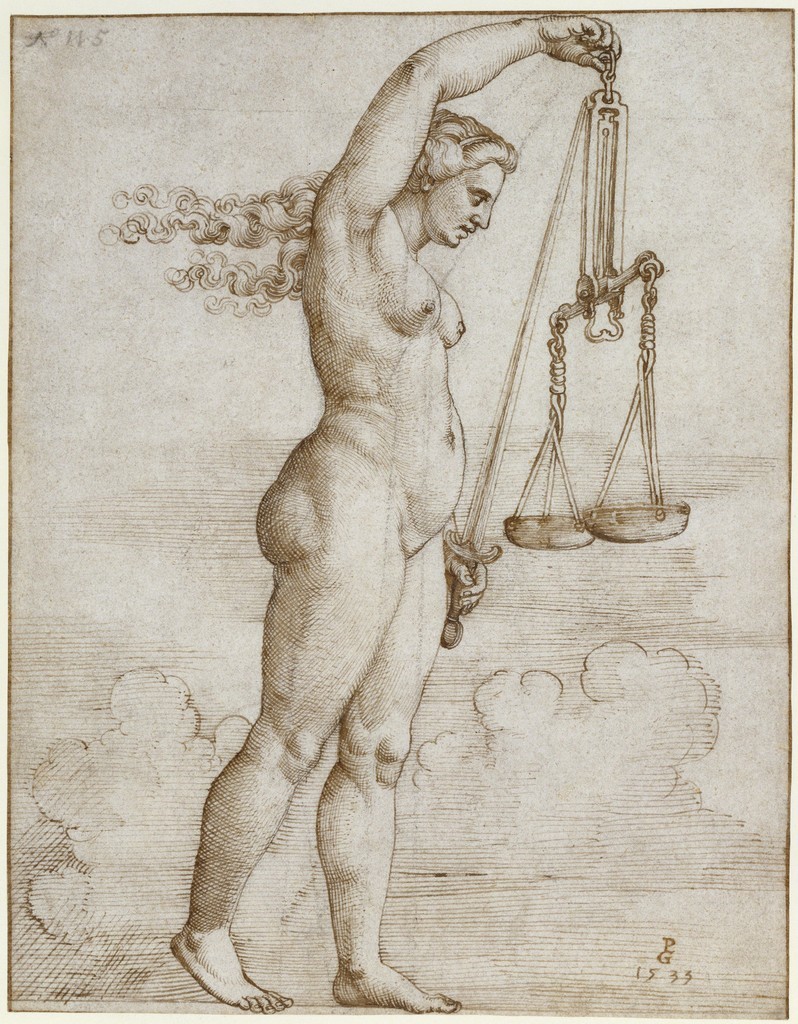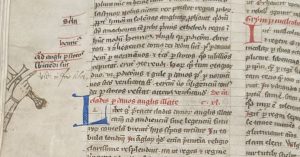
by Valérie Hayaert
Animated by signs that are in essence mutable, Justitia (Lady Justice) may be perceived as an allegory in motion. Scholars who pretend to master the intricacies of this “science of images” (iconology) forget an important fact: allegories disseminate through a wide panel of outward patterns (cultural appropriation, voluntarist symbolic acts, self-presentation) but also through the unknown rules of the psyche (engrams, fantasies, sonic image, synaesthesias).

Beyond the normative textual order of the science of images, allegories of Justice generate various inventions in allegoresis. The three-dimensional geometries of Justitia’s bodies in the early modern period articulate a new sense of perception, rooted in a triangular physiological scheme (eye-movements/ambidextrous ability/synaesthetic agency).
If we want to understand the eschatological dimension of the imaginal, Lady Justice’s attributes can serve as an intriguing case. This is controversial; we need to distance ourselves from the idea of a “power of images” (David Freedberg) contained in images themselves. Images are always fragments of imaging processes, part of rituals and in the case of Justitia, situated at the interface of natural and institutional signs.

When a viewer encounters an embodied image of Justice, he presumably addresses the artifact with his own cognitive and affective style. We have to take into account the “periodicity of the eye” (M. Baxandall) but also the entire body as involved in a viewing process. Perception is a nexus of interlocking senses (eye-movements, prehensile movements, circumnavigation movements). To fulfill persuasive, mnemonic or deontological functions, allegories of Justice embody the triangle formed by the gaze, the sword and the scales. The aims of this book is: first, to interrogate the relationship between gaze, sword and scales, through which the ‘augmented’ body of Lady Justice is seen as an avatar of the judge; second, to recover the spatial dimension of an interpretative plurality through the analysis emotion and memory.
Justitia will be considered here as an imaginal crossroads of contradictory affects. These affective processes are to be thought of as major constituents of Justitia as an apparatus (dispositif). In the antique tradition of judicial ekphrasis, Justitia draws on the auctoritas of Chrysippus to mould an imago of the judge’s ethics. Whilst physiognomy is used by judges as a practical skill for adjudicative assessment, allegory is used symmetrically by early modern artists to convey an aesthetic and ethical metaphor of the Law.
Beyond formal convention and subsequent decay, Justitia’s ‘instruments’ were used as strong tenets of verisimilitude during the early modern era, placing both the judges and litigants under her auratic power. Her gigantic sword or oversized scales conflated two types of fascinum, beyond logos and nomos, pointing towards the need to ward off anomia. In one of the most imaginative and fascinating effigies of Lady Justice, Georg Pencz offers a striking vision of the unknowing knowledge of the legal subject, which can only be apprehended through the enigmatic holding of the magical instrument. Captured at the pivotal moment of a symbolic task, a powerful nude in profile manipulates with extreme care the two instruments of sword and scales as if they had been bewitched by the fascinum of her own gaze. Her outstretched right arm holds a type of scales like those depicted in Dürer’s Melancolia. Her line of sight goes through the fulcrum which cause the pans to be balanced. The sword’s edge is purposely drawn so as to measure by touch the half body-length of the gigantic scales she manipulates. Her tiptoed right foot indicates a sequence of movements, corroborated by life-sketching lines in fine black chalk. Lady Justice is here depicted as a living being, an animated heroic nude drawing. Above all, the geometrical premises of her body are ‘augmented’ by her command of both instruments.

About the book
Get 30% off your copy with discount code NEW30
Lady Justice: An Anatomy of Allegory brings together an analysis of thousands of images from the period 1400 – 1600, many of them previously overlooked, including artwork, frontispieces, legal texts, sculptures and statues in public spaces and in court buildings scattered across six countries. Lady Justice is taken apart and considered afresh – organ by organ, limb by limb, digit by digit, making a case for a treatment of allegory in all its complexity, ambiguity and affective force.

About the author
My research interests lie at the intersection of Art and Law. Originally a Literature scholar and an Art Historian of the Early Modern period, I have explored various aspects of international and interdisciplinary engagements within the broader spectrum of Art and Law. My work explores bi-medial literary genres such as emblems, visual discourses, technologies and theories surrounding the social appearances and political performances of justice, scrupulously attentive to both their historical depth and contemporary urgency.





